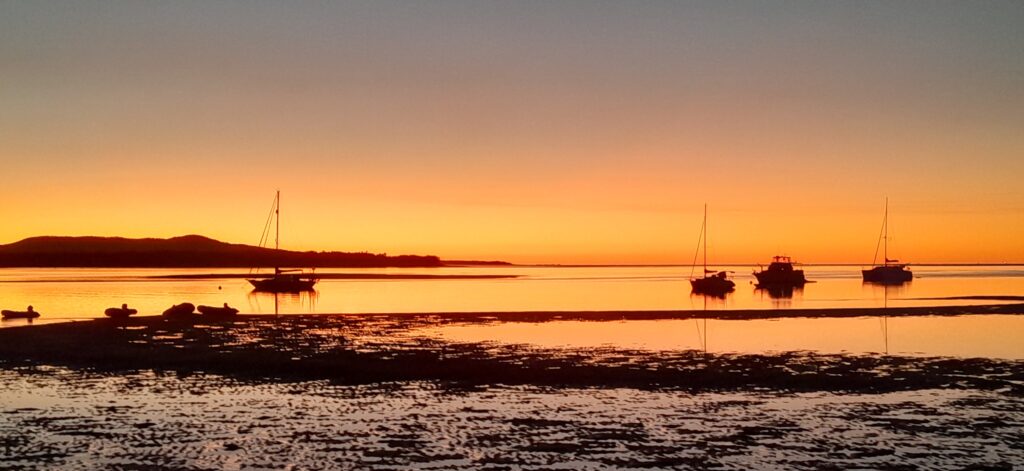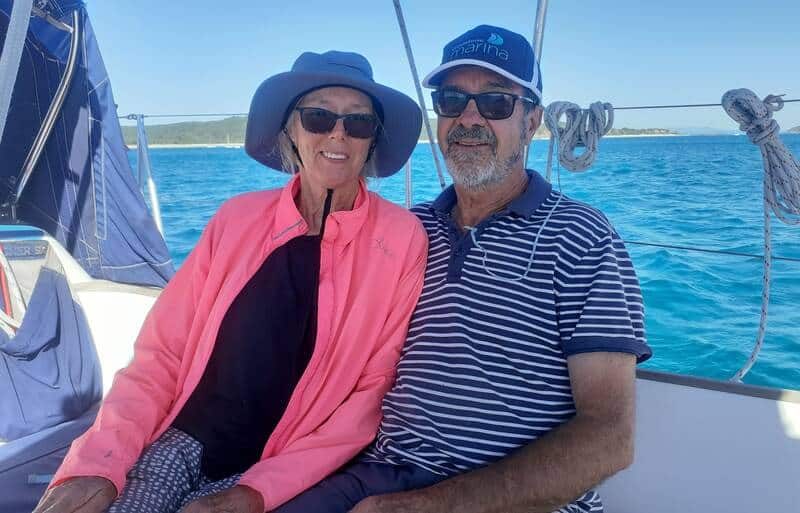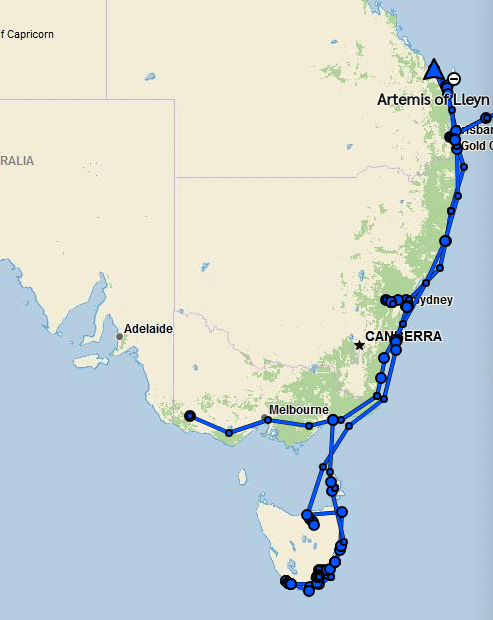Since we reached the Coral Sea we have been hearing sailors talk of the semi-mythical showers of Dunk Island. The stories tell of a granite island rising out of the azure blue ocean. Its flanks are covered with tropical rain forest and it is fringed by coral reefs. There is a sandy bay sheltered from the prevailing trade winds where a sailing boat can attach to a free buoy. There is a friendly cafe open at weekends and – so the stories tell – there are showers with unlimited, free, hot water. For sailors this is a mixture of eldorado and the holy grail.

We sailed behind the majestic mountains of the Hichenbrook Channel and then on across the Coral Sea to finally ghost round the edge of the bay and take a buoy just as the wind dropped.
The next morning we took the dinghy to the jetty and set off along the beach to search for the gap in the rainforest that marked the walk to the highest point on the island. The forest was still cool and moist from the night’s rain and we were protected from the sun below the forest canopy which made for perfect walking conditions

A viewing platform at the summit offered fabulous views across the neighbouring islands. Some rusting metal in the bush was identified as a WW2 radar station which explained the well made track we had just climbed.
We decided to take the longer route back and so crossed the spine of the island in the forest. Now that we are in crocodile country, we had forgotten about snakes. Until we found one warming itself in a sunny patch in the middle of the path. It was small but unwilling to yield its place so we gingerly side stepped it.
From Coconut Bay we returned via the mangrove trees and granite blocks on the sea shore. We rewarded ourselves with a cafe lunch and then made our way to the legendary showers. They were really hot, endless and free. Amazing!

As the sun set we dropped the mooring buoy and headed out in to the star filled night.



















